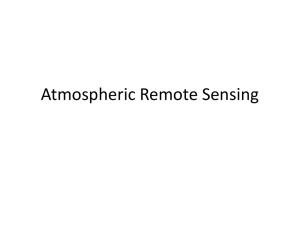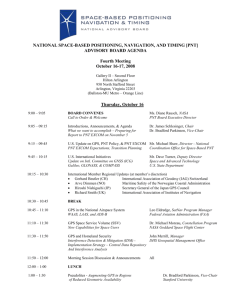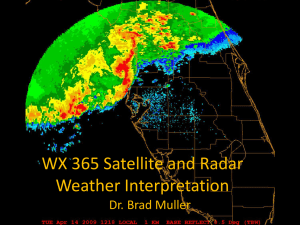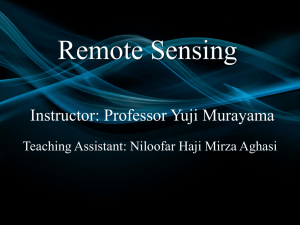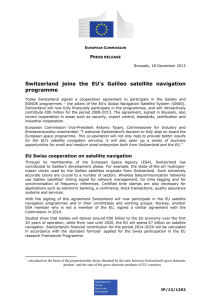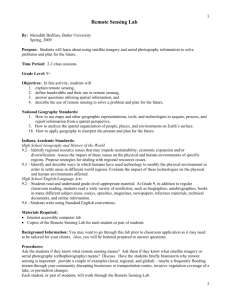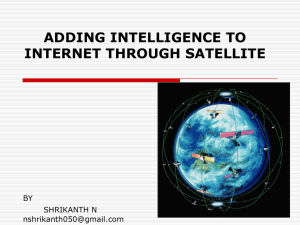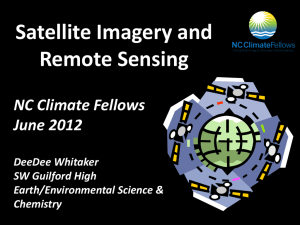Presentation 2
advertisement
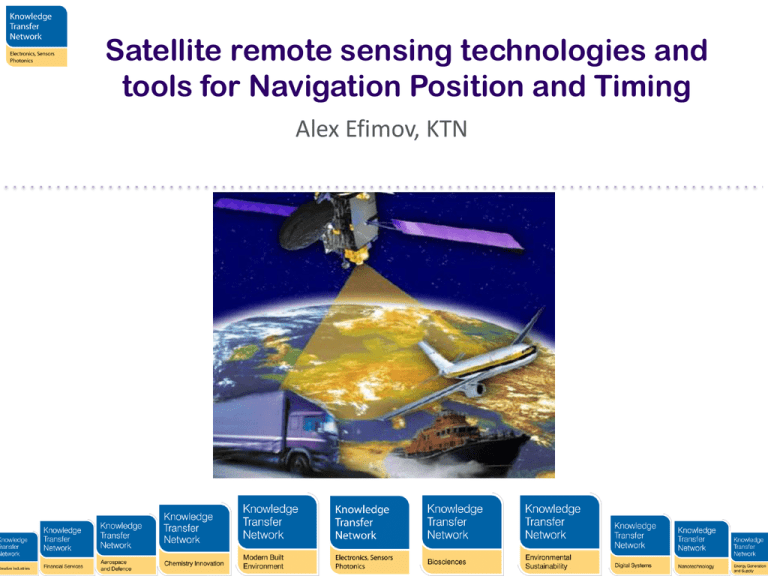
Satellite remote sensing technologies and tools for Navigation Position and Timing Alex Efimov, KTN KTN Fun Facts Σ(KTN)n=15 =THE KTN as of the 1st of April 2014 • • • • Chairman: David Lockwood, Laird Plc CEO: Chris Warkup Workforce: 110 Office locations: Edinburgh, Runcorn, Harwell, Cambridge, London, Horsham Satellite Remote Sensing REMOTE SENSING PRINCIPLE The EMR reflected, emitted, or back emitted, or back scattered from an object or geographic scattered from an object or geographic area is detected and used to approximate properties of interest Passive Sun’s energy which is reflected (visible) or absorbed and re-emitted as thermal infrared wavelengths Active Radiation emitted from a satellite is then reflected detected and measured (LIDAR, RADAR) Satellite LIDAR Developments • 3D imaging LIDAR (image from ESA) • 3D imaging LIDAR could build a complete picture of targets or surfaces • NASA satellite with LIDAR technology produced a firstof-its-kind map of tree-canopy heights around the world. • ESA satellite ADM-Aeolus that is due for launch in 2015 NovaSAR-S Synthetic Aperture Radar • S-Band Radar • Low cost small satellite • Applications include: • maritime surveillance • monitoring the environment, including ice cover, iceberg monitoring, pollution and bathymetry Sentinel-1 • Sentinel 1= 2 EO Satellites • C-Band SAR with medium and high resolution sensor • Applications include: • Land and ocean monitoring • Works in any ambient weather and light conditions Sentinel-1 is almost ready for launch on 3 April 2014 Positioning, Navigation and Timing Global Navigation Satellite Systems: • GPS (US, military controlled) • GLONASS (Russia, military controlled) • European Geostationary Navigation Overlay Service (EGNOS) (EU, regional, GPS overlay, civilian) • Beidou (China, currently regional, expected to become global by 2020) • Galileo (EU, global, civilian, expected by 2020) What accuracy do you need? • GPS signal in space will provide a "worst case" pseudorange accuracy of 7.8 meters at a 95% confidence level. Depends on receiver and ambient environment conditions (www.gps.gov) • GLONASS results based on a real life test with various navigation receivers showed the maximum error of 38m and the average error 7.32m. • EGNOS allows users in Europe and beyond to determine their position to within 1.5m Reliability Issues Potential causes for disruption: • Obscuration: foliage, buildings, power lines, tunnels, etc. • Electronic interference natural or malicious • Space weather Mitigation: • EGNOS: ground based segment + GEO satellites • Alternative positioning references: WiFi and similar • Inertial navigation What? Where? When? • Data from sensor systems provide descriptive environmental information • Sensing data combined with positioning data allows spatial analysis (import into GIS, combining satellite, aerial and ground based sensing data) • Combining the above with timing provides decision makers with actionable information Opportunities for sensing and PNT innovation • PNT resilience • Indoor PNT • Growing use of mobile devices: opportunities for PNT and sensing • Co-operative PNT • Crowd sourcing • Smart system integration


